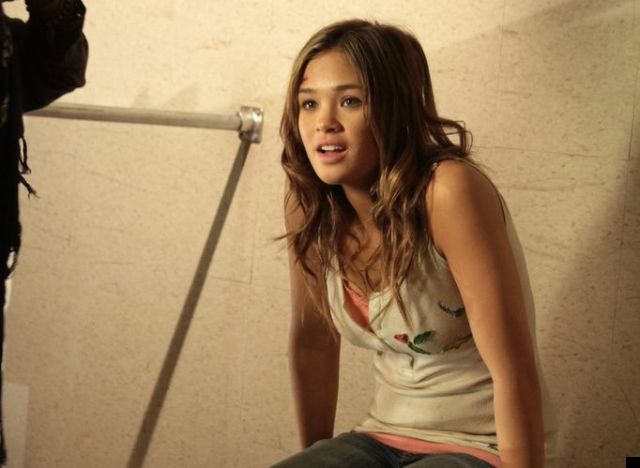
A couple years ago, I wrote a script that was made into a movie, and this summer it came out on DVD and VOD. It’s called Red Line, and it’s about the survivors of a subway crash who are trapped in the collapsed tunnel. For my
first feature film, I’m pretty proud of how it turned out, especially considering that most of us were students when we made it — we hired professionals for
our key department heads, but the rest of the crew was almost completely made up of students.
When I first went in to pitch to the producers of Red Line, I didn’t know that women screenwriters were a rare sight in Hollywood. I knew that
directing and cinematography were heavily male-dominated, but I didn’t know that same was true of producing, writing, and editing. I guess I was pretty
naive.
And to be honest, working on Red Line didn’t open my eyes at all to the gender disparity that exists in the film industry. We had women filling
all sorts of crew positions, including the line producer, editor, and ‘A’ camera operator. In fact, it wasn’t until the movie was actually released that I
became aware of how unusual it was to have had so many women in key creative roles.
So I started doing some research, reading articles and studies on all the statistics. It turns out that our cast is unusually balanced as well. I started
reading about things like the Bechdel test and the USC Annenberg study that revealed how few speaking parts women
have as well as how many sexualized ones. It became clear that women, more often than not, serve as eye candy on screen.
In Red Line, the backbone of the cast is Nicole Gale Anderson’s character, Tori. She’s strong and tenacious, never settling for the easy answer
but always searching for the truth. Nicole is a beautiful young woman, to be sure, but she’s certainly not on screen to be eye candy. She’s tough, a
fighter. She shares a couple tender moments with Kunal Sharma’s character, Al, but romance is the last thing on her mind.
When I started writing Red Line, it never occurred to me to make the protagonist anyone other than Tori, a young woman. Chalk it up to my being a
young(ish) woman, but of all the characters I came up with, she was the one I could relate to best. They always say, “write what you know.” Well, I know a
whole lot more about being a woman than I do about being a man, so it’s only natural that I should choose to bring Tori out of what is otherwise an
ensemble cast.
The sad part about all of this is that what seemed so natural and relatable to me might just be the reason Red Line didn’t get a theatrical
release. The pieces started fitting together in my mind as I uncovered the statistics – why so many distributors liked our movie but passed on it, saying
we didn’t have any “marketable” names linked to it, on screen or off. It sort of makes sense, but I have to wonder, if it had been a male-dominated cast,
would it have mattered whether they were big names? Would an action flick with mostly dudes in it have been more marketable? Or would it have been easier
to market if the women were scantily clad, there only to be ogled over by the men on set and in the audience?
I hate that these questions cross my mind. I shouldn’t have to wonder these things. I don’t want to be haunted by the idea that my next script might be
something brilliant, but no one will want to distribute it because there’s a woman in the lead who doesn’t take her clothes off.
_______________________________________
Tara Stone wrote the screenplay for the thriller, Red Line, which was released on DVD and VOD July 2013.







